Description
Emulsi D Supreme – Advanced Micellized Vitamin D3 Optimization System
The Vitamin D Delivery Problem We Discovered
When we started working with patients addressing vitamin D deficiency, we encountered an unexpected complication: many people were taking high-dose vitamin D supplements yet their blood levels (25-hydroxyvitamin D) remained suboptimal. Compliance wasn't the issue—patients were taking their supplements daily. The problem was absorption.
Vitamin D is inherently fat-soluble, requiring adequate dietary fat and efficient fat digestion for absorption. We noticed the absorption problem was particularly pronounced in certain populations: individuals with compromised fat digestion (low bile production, pancreatic insufficiency, gallbladder issues), those taking medications that impair fat absorption (cholesterol-lowering drugs, some weight-loss medications), elderly individuals with declining digestive function, and people taking vitamin D supplements away from meals without adequate dietary fat.
These patients would take standard oil-based vitamin D capsules, but without optimal fat digestion and bile secretion, the vitamin D remained poorly emulsified—forming large lipid droplets that couldn't be efficiently absorbed across intestinal membranes. Blood testing confirmed the problem: despite consuming 2,000-5,000 IU daily, their 25(OH)D levels stayed in the deficient or insufficient range (below 30-40 ng/mL).
This led us to investigate advanced vitamin D delivery technologies that could bypass the fat digestion requirement. We discovered that pre-micellized vitamin D—where vitamin D is already processed into ultra-small micelle structures—could be absorbed directly without requiring bile salts or pancreatic lipase. This micellization technology transforms fat-soluble vitamin D into a water-dispersible form that the body can absorb efficiently regardless of digestive capacity or meal composition.
Emulsi D Supreme represents this bioavailability-enhanced solution: an Advanced Micellized Vitamin D3 Optimization System utilizing proprietary micellization technology that delivers vitamin D3 in water-soluble micelle structures, providing superior absorption compared to standard oil-based vitamin D supplements—particularly valuable for individuals with compromised fat digestion or those taking vitamin D between meals.
Why Standard Vitamin D Supplements Disappoint
Most vitamin D supplements provide cholecalciferol (D3) dissolved in oil—typically soybean, olive, or medium-chain triglyceride oil—in softgels or drops. While this delivery method works adequately for individuals with optimal fat digestion taking supplements with fatty meals, it fails to address four critical realities that commonly impair vitamin D absorption:
The Fat Digestion Dependency: Standard oil-based vitamin D requires a complex digestive process before absorption can occur: bile salts must emulsify the oil into small droplets, pancreatic lipase must digest the oil, and the resulting micelles (formed through digestion) must transport vitamin D to intestinal cells for absorption. This process depends on adequate bile production, pancreatic enzyme secretion, and proper digestive function—all of which decline with age, are impaired by various medications, and can be compromised by digestive disorders.
The Empty Stomach Problem: Many people take vitamin D supplements in the morning with other medications or supplements on an empty stomach or with minimal food. Without dietary fat to trigger bile release and provide the lipid matrix for emulsification, vitamin D absorption plummets. Studies show vitamin D absorption with a fat-free meal can be 30-50% lower than absorption with a meal containing adequate fat. Yet most people don't optimize meal composition around their vitamin D supplement timing.
The Digestive Disorder Challenge: Conditions that impair fat digestion and absorption—including inflammatory bowel disease (Crohn's, ulcerative colitis), celiac disease, chronic pancreatitis, cystic fibrosis, bile acid malabsorption, and post-bariatric surgery states—dramatically reduce vitamin D absorption from standard supplements. These individuals may require 2-5 times higher vitamin D doses to achieve adequate blood levels, or they may never reach optimal levels regardless of dose with standard formulations.
The Medication Interference Issue: Several common medications impair vitamin D absorption or metabolism: cholesterol-lowering drugs (statins, bile acid sequestrants), weight-loss medications that block fat absorption (orlistat), some anticonvulsants, and glucocorticoids. Individuals taking these medications often struggle to maintain adequate vitamin D levels even with supplementation because the medications interfere with the fat digestion processes required for standard vitamin D absorption.
These widespread challenges mean that a significant portion of the population taking vitamin D supplements cannot efficiently absorb them, resulting in persistent vitamin D insufficiency despite seemingly adequate supplementation.
The Emulsi D Supreme Micellized Delivery Strategy
Emulsi D Supreme implements an advanced bioavailability enhancement approach that fundamentally transforms vitamin D absorption by eliminating the fat digestion requirement:
Pre-Micellization Technology – Vitamin D3 is processed into ultra-small (10-50 nanometer) micelle structures using specialized surfactants before consumption. These pre-formed micelles are already in the exact form needed for intestinal absorption, bypassing the entire emulsification and digestion process that standard vitamin D requires.
Water-Soluble Dispersion – The micellized vitamin D3 disperses readily in water or juice, creating a clear solution where vitamin D remains in molecular dispersion rather than forming oil droplets. This water-solubility enables absorption regardless of bile production, pancreatic enzyme function, or dietary fat intake.
Direct Intestinal Uptake – The ultra-small micelle size and surfactant components facilitate direct vitamin D transport across intestinal membranes through passive diffusion and potentially active transport mechanisms, achieving absorption efficiency independent of individual digestive capacity.
Enhanced Bioavailability Across Populations – Clinical studies show micellized vitamin D3 achieves superior absorption compared to oil-based formulations, with particularly dramatic improvements in individuals with compromised fat digestion, those taking vitamin D without meals, and populations with digestive disorders affecting fat absorption.
This micellization technology makes vitamin D supplementation more reliable and effective across diverse populations, ensuring consistent absorption regardless of digestive health, meal composition, or medication use.
The Science Behind Vitamin D3 and Optimal Delivery
Understanding Vitamin D Biochemistry and Physiological Roles
Vitamin D represents a group of fat-soluble secosteroids, with vitamin D3 (cholecalciferol) being the form most relevant for human supplementation. Unlike true vitamins (which must be obtained from diet), vitamin D functions more like a hormone—it can be synthesized in skin upon UVB exposure and affects gene expression throughout the body after conversion to its active form.
Vitamin D Synthesis and Metabolism: When UVB radiation (wavelength 290-315 nm) strikes skin, it converts 7-dehydrocholesterol to previtamin D3, which then isomerizes to vitamin D3 (cholecalciferol). Dietary vitamin D3 (from fatty fish, egg yolks, fortified foods, or supplements) is absorbed in the small intestine and transported to the liver. In the liver, cholecalciferol is hydroxylated to 25-hydroxyvitamin D [25(OH)D]—the major circulating form and the marker used to assess vitamin D status in blood tests.
The kidneys then convert 25(OH)D to 1,25-dihydroxyvitamin D [1,25(OH)₂D, also called calcitriol]—the biologically active hormone form that binds to vitamin D receptors (VDR) throughout the body. Importantly, many tissues besides the kidneys can locally convert 25(OH)D to active 1,25(OH)₂D, enabling tissue-specific vitamin D actions independent of systemic calcitriol levels.
Calcium Homeostasis and Bone Health: Vitamin D's most well-established role involves maintaining calcium and phosphorus balance for skeletal health. Calcitriol increases intestinal calcium and phosphorus absorption, promotes calcium reabsorption in kidneys, and—when needed to maintain blood calcium levels—stimulates calcium mobilization from bone. Adequate vitamin D is essential for bone mineralization, preventing rickets in children and osteomalacia in adults. Vitamin D deficiency impairs calcium absorption even with adequate dietary calcium, leading to secondary hyperparathyroidism and progressive bone loss.
Immune System Modulation: Vitamin D receptors are expressed in virtually all immune cells—T cells, B cells, macrophages, dendritic cells. Calcitriol influences both innate immunity (enhancing antimicrobial peptide production, supporting macrophage function) and adaptive immunity (modulating T cell responses, promoting immune tolerance). Adequate vitamin D status supports balanced immune function—neither overactive (autoimmunity, excessive inflammation) nor underactive (increased infection susceptibility).
Cardiovascular Health Support: Vitamin D receptors are present in vascular smooth muscle cells, endothelial cells, and cardiomyocytes. Research suggests vitamin D influences cardiovascular health through multiple mechanisms: regulating the renin-angiotensin-aldosterone system (affecting blood pressure), supporting endothelial function and vascular health, modulating inflammation in cardiovascular tissues, and influencing cardiac muscle function. Epidemiological studies show inverse associations between vitamin D status and cardiovascular concerns, though interventional trial results have been mixed.
Mood and Neurological Function: The brain expresses vitamin D receptors and the enzyme that converts 25(OH)D to active calcitriol, suggesting local vitamin D metabolism in neural tissues. Vitamin D influences neurotransmitter synthesis, neuroprotection, and neural plasticity. Low vitamin D status has been associated with mood concerns and cognitive issues, particularly in older adults, though causality remains under investigation.
Cellular Proliferation and Differentiation: Calcitriol affects cell growth, differentiation, and apoptosis (programmed cell death) by modulating expression of hundreds of genes through vitamin D receptors. This broad influence on cellular behavior explains vitamin D's potential roles in numerous physiological processes and disease states.
Musculoskeletal Function: Beyond bone health, vitamin D supports muscle function. Vitamin D receptors in muscle tissue influence muscle protein synthesis, muscle cell differentiation, and calcium handling within muscle cells. Deficiency has been linked to muscle weakness, poor physical performance, and increased fall risk—particularly in elderly populations.
The Vitamin D Deficiency Epidemic
Despite vitamin D's critical importance, deficiency and insufficiency are remarkably prevalent worldwide:
Prevalence Data: Studies estimate that 40-50% of the global population has insufficient vitamin D status (25(OH)D below 30 ng/mL), with even higher rates in certain populations: individuals living at higher latitudes (less UVB exposure), people with darker skin (melanin reduces UVB penetration), elderly individuals (reduced skin synthesis capacity), those spending limited time outdoors, people using extensive sun protection, individuals with obesity (vitamin D sequestration in adipose tissue), and people with conditions affecting fat absorption.
Causes of Deficiency: The modern vitamin D deficiency epidemic results from multiple factors:
- Reduced Sun Exposure: Indoor lifestyles, office work, urbanization, and extensive use of sunscreen (necessary for skin cancer prevention but blocking UVB-induced vitamin D synthesis)
- Geographic Limitations: At latitudes above 35° (most of the US, Europe, Canada), UVB intensity during winter months is insufficient for vitamin D synthesis regardless of sun exposure
- Aging: Skin's capacity to synthesize vitamin D declines 50-75% between ages 20 and 70
- Obesity: Vitamin D is fat-soluble and becomes sequestered in adipose tissue, reducing bioavailability
- Dietary Inadequacy: Few foods naturally contain vitamin D; without fortification or supplementation, dietary intake is typically very low (100-200 IU daily)
Health Consequences: Prolonged vitamin D deficiency affects multiple systems: impaired calcium absorption leading to bone loss and fractures, muscle weakness and fall risk, potentially increased susceptibility to infections, possible cardiovascular implications, potential mood and cognitive effects, and various other health concerns associated with inadequate vitamin D receptor activation throughout the body.
The Fat-Soluble Absorption Challenge
Vitamin D's fat-soluble nature creates the fundamental absorption challenge that micellization technology solves:
Standard Absorption Process: When fat-soluble vitamin D in oil is consumed, it requires:
- Emulsification: Bile salts emulsify the oil into small droplets, increasing surface area for enzyme action
- Digestion: Pancreatic lipase breaks down triglycerides, creating free fatty acids and monoglycerides
- Micelle Formation: Bile salts spontaneously form micelles—aggregates where hydrophobic tails face inward (solubilizing fat-soluble nutrients like vitamin D) and hydrophilic heads face outward (making the structure water-soluble)
- Intestinal Absorption: Micelles transport vitamin D to intestinal epithelial cells where it diffuses across cell membranes
- Lymphatic Transport: Absorbed vitamin D is incorporated into chylomicrons and transported through lymphatic system to bloodstream
This multi-step process depends on numerous factors working properly—adequate bile production, functional pancreatic enzymes, healthy intestinal mucosa, sufficient dietary fat to trigger the process. When any step is compromised, vitamin D absorption suffers.
Individual Variability: Vitamin D absorption efficiency varies dramatically between individuals based on digestive health, age, medication use, genetic factors, body composition, and the presence of dietary fat with supplementation. This variability means that the same vitamin D dose produces widely different blood levels in different people—some achieve optimal status easily, while others remain deficient despite seemingly adequate supplementation.
Micellized Vitamin D3: The Absorption Solution
Emulsi D Supreme's micellization technology pre-forms the micelle structures that normally must be created through digestion, fundamentally transforming vitamin D absorption:
Pre-Formed Micelle Structure: Vitamin D3 is processed with specialized surfactants (ethoxylated castor oil in this formulation) that spontaneously form micelles when mixed with water. These micelles—measuring 10-50 nanometers in diameter—contain vitamin D3 in their hydrophobic core, surrounded by a hydrophilic surfactant shell. This structure is already in the exact form needed for intestinal absorption.
Water-Dispersible Format: When Emulsi D Supreme drops are mixed with water or juice, the micelles disperse throughout the aqueous solution, creating a clear, stable dispersion. This water-solubility represents the key innovation—vitamin D that behaves as if it's water-soluble despite being inherently fat-soluble.
Bypassing Digestive Requirements: Because the micelles are pre-formed, absorption doesn't require:
- Bile salt secretion (beneficial for individuals with gallbladder issues or bile acid malabsorption)
- Pancreatic lipase activity (beneficial for those with pancreatic insufficiency)
- Dietary fat intake (can be taken with water between meals)
- Normal fat digestion processes (beneficial for those with fat malabsorption conditions)
Enhanced Absorption Efficiency: Research on micellized vitamin D shows:
- Higher and more consistent blood 25(OH)D levels compared to oil-based formulations at equivalent doses
- Particularly dramatic improvements in individuals with fat malabsorption conditions
- More reliable absorption when taken without meals or with minimal food
- Reduced variability between individuals—more predictable dose-response relationship
Liquid Drop Precision: The liquid drop format provides precise, adjustable dosing—particularly valuable for individualizing vitamin D intake based on blood testing, body weight, or specific needs. The 2,000 IU per drop dosing allows easy adjustment (1 drop = 2,000 IU, 2 drops = 4,000 IU, etc.) without needing different product strengths.
Optimal Vitamin D Dosing: Beyond the RDA
The RDA for vitamin D is 600 IU for adults up to age 70 and 800 IU for those over 70—amounts designed to prevent deficiency in most of the population. However, many researchers and clinicians argue these values are too low for optimal health:
Vitamin D Status Targets: The Institute of Medicine defines vitamin D status as:
- Deficient: <20 ng/mL
- Insufficient: 20-29 ng/mL
- Sufficient: ≥30 ng/mL
However, many vitamin D researchers advocate for higher targets (40-60 ng/mL) for optimal health, requiring higher intake than the RDA for most people.
Individualized Dosing Requirements: The amount of vitamin D needed to achieve optimal blood levels varies dramatically based on:
- Starting Status: Those with severe deficiency need higher doses initially
- Body Weight: Larger individuals require more vitamin D (vitamin D is fat-soluble and distributes into adipose tissue)
- Age: Older adults often need higher doses due to reduced absorption and skin synthesis
- Sun Exposure: Those with minimal sun exposure need higher supplemental intake
- Skin Pigmentation: Darker skin requires more UVB exposure for equivalent vitamin D synthesis
- Health Status: Certain conditions increase vitamin D requirements
Typical Supplementation Ranges:
- Maintenance: 1,000-2,000 IU daily for individuals with adequate sun exposure and healthy vitamin D metabolism
- General Supplementation: 2,000-4,000 IU daily for most adults seeking to maintain optimal levels year-round
- Repletion: 5,000-10,000 IU daily (or higher) for correcting deficiency, under healthcare provider supervision with monitoring
The Critical Role of Testing: Blood testing (25-hydroxyvitamin D) represents the only reliable way to assess vitamin D status and guide dosing. The Vitamin D Council and many practitioners recommend testing baseline levels, supplementing appropriately, then retesting after 2-3 months to adjust dosing as needed to reach and maintain target levels.
Who Benefits Most from Emulsi D Supreme
Individuals with Compromised Fat Digestion: Those with gallbladder issues, bile acid malabsorption, pancreatic insufficiency, or other conditions impairing fat digestion benefit from the pre-micellized format that doesn't require normal fat digestion for absorption.
People with Digestive Disorders Affecting Fat Absorption: Individuals with inflammatory bowel disease (Crohn's disease, ulcerative colitis), celiac disease, chronic pancreatitis, cystic fibrosis, or post-bariatric surgery states struggle to absorb standard oil-based vitamin D but can absorb micellized formulations efficiently.
Those Taking Medications That Impair Fat Absorption: People using cholesterol-lowering drugs (particularly bile acid sequestrants), weight-loss medications that block fat absorption (orlistat), or other medications affecting fat digestion benefit from vitamin D that doesn't depend on fat absorption.
Individuals Taking Vitamin D Without Meals: Many people prefer taking supplements in the morning with water or with minimal food. Emulsi D Supreme's water-dispersible format ensures efficient absorption regardless of meal composition or timing.
Elderly Individuals: Aging reduces stomach acid, digestive enzyme production, and overall digestive efficiency. The micellized format provides more reliable absorption despite age-related digestive decline.
People with Vitamin D Deficiency Despite Supplementation: If you've been taking standard vitamin D supplements but blood testing shows persistent low levels, poor absorption may be the issue. The enhanced bioavailability of Emulsi D Supreme may finally enable you to reach optimal vitamin D status.
Those Seeking Convenient, Flexible Dosing: The liquid drop format allows precise dose adjustment (1 drop = 2,000 IU) and can be mixed in water or juice, making supplementation easy and adaptable to individual needs.
Anyone Wanting Maximum Absorption Assurance: Even individuals with normal digestion benefit from the superior, more consistent absorption that micellized vitamin D provides compared to standard oil-based formulations.
The Complete Vitamin D Optimization Protocol
Daily Use Guidelines
Standard Protocol: Take 1 drop (2,000 IU) twice daily mixed in 1-2 ounces of water or juice, or as directed by your healthcare practitioner based on blood testing.
Mixing Instructions: Add the prescribed number of drops to a small amount of water or juice, swirl gently to mix, and consume immediately. The micelles disperse rapidly in liquid, creating a clear solution ready for absorption.
Timing Flexibility: Unlike oil-based vitamin D, Emulsi D Supreme can be taken with or without food, in the morning or evening, based on personal preference. The micellized format ensures consistent absorption regardless of meal timing or composition.
Individualized Dosing Strategies
For Maintenance (Normal Vitamin D Status): 1 drop daily (2,000 IU) may be sufficient for maintaining adequate levels in individuals with some sun exposure, healthy vitamin D metabolism, and baseline 25(OH)D levels in the optimal range (40-60 ng/mL).
For General Supplementation (Unknown or Suboptimal Status): 1 drop twice daily (4,000 IU total) provides robust vitamin D intake for most adults seeking to achieve and maintain optimal levels year-round, particularly during winter months or with limited sun exposure.
For Deficiency Correction: Individuals with documented vitamin D deficiency (25(OH)D below 20-30 ng/mL) may need higher doses—potentially 2-3 drops twice daily (8,000-12,000 IU total) for 8-12 weeks to correct deficiency, then transitioning to maintenance dosing. This should be done under healthcare provider supervision with follow-up testing.
For Special Populations:
- Obesity: Higher doses (based on body weight) may be needed as vitamin D distributes into adipose tissue
- Malabsorption Conditions: Even with enhanced absorption, individuals with severe malabsorption may need higher doses—work with your healthcare provider
- Medication Users: Those on medications affecting vitamin D metabolism (some anticonvulsants, glucocorticoids) may require higher doses
- Elderly: Age-related absorption changes may warrant higher doses even with micellized formulation
The Critical Importance of Blood Testing
Baseline Testing: Before starting supplementation, measure baseline 25-hydroxyvitamin D levels to assess your starting point and guide initial dosing.
Follow-Up Testing: Retest 25(OH)D after 2-3 months of consistent supplementation to assess response and adjust dosing as needed to reach and maintain your target level (typically 40-60 ng/mL, though discuss optimal targets with your healthcare provider).
Ongoing Monitoring: Once optimal levels are achieved, annual testing (or testing twice annually—summer and winter—to account for seasonal variations) ensures you maintain adequate status long-term.
Dosing Adjustments: Based on testing results:
- If levels remain low despite supplementation, increase dose by 1,000-2,000 IU daily and retest in 2-3 months
- If levels are optimal, continue current dose
- If levels are excessive (>80-100 ng/mL), reduce dose—vitamin D toxicity is rare but possible with prolonged very high intake
Duration and Expectations
Deficiency Correction Timeline: For individuals starting with deficiency, achieving optimal blood levels typically requires 2-3 months of consistent supplementation at appropriate doses. Severe deficiency may take longer.
Maintenance Requirements: Once optimal levels are achieved, ongoing daily supplementation is necessary to maintain status, as vitamin D stores gradually decline without continued intake from sun exposure or supplementation.
Symptom Improvements: Subjective improvements (better energy, improved mood, reduced muscle aches) may be noticed within 4-8 weeks as vitamin D status improves, though benefits are often subtle rather than dramatic. The most reliable assessment is blood testing rather than symptoms.
Complementary Strategies for Optimal Vitamin D Status
Magnesium Sufficiency: Magnesium is required for converting vitamin D to its active form and for vitamin D receptor function. Ensure adequate magnesium intake (300-400 mg daily from diet and/or supplements) to optimize vitamin D utilization.
Vitamin K2: Works synergistically with vitamin D for bone and cardiovascular health. Vitamin D increases calcium absorption, while vitamin K2 helps direct that calcium to bones (where it's beneficial) rather than soft tissues (where it can be problematic). Consider vitamin K2 supplementation (100-200 mcg daily) alongside vitamin D.
Calcium Intake: Adequate dietary calcium (1,000-1,200 mg daily from diet) ensures vitamin D's bone-supporting effects can be realized. However, don't over-supplement calcium—excessive intake without adequate K2 may have cardiovascular implications.
Safe Sun Exposure: When feasible and safe, moderate sun exposure (10-30 minutes of midday sun on exposed skin, several times weekly, without burning) contributes to vitamin D status while providing other health benefits. Balance sun exposure for vitamin D with skin cancer prevention.
Healthy Fats in Diet: While Emulsi D Supreme doesn't require dietary fat for absorption, healthy fats in your overall diet (olive oil, avocado, nuts, fatty fish) support fat-soluble vitamin absorption from food sources and provide numerous other health benefits.
Why Emulsi D Supreme Represents a Superior Approach
Advanced Micellization Technology: Pre-formed micelle structures bypass the entire fat digestion requirement, providing superior absorption compared to standard oil-based vitamin D—particularly beneficial for individuals with compromised digestion or those taking vitamin D without meals.
Water-Dispersible Format: The ability to mix drops in water or juice makes supplementation convenient and ensures consistent absorption regardless of meal composition or timing—eliminating the common problem of taking fat-soluble vitamins without adequate dietary fat.
Enhanced Bioavailability Across Populations: Clinical research on micellized vitamin D demonstrates superior and more consistent absorption compared to oil-based formulations, with particularly dramatic improvements in populations with fat malabsorption conditions.
Precision Liquid Dosing: The drop format (2,000 IU per drop) allows precise, individualized dosing that can be easily adjusted based on blood testing, body weight, or changing needs—much more flexible than fixed-dose capsules.
Digestive Independence: Provides reliable vitamin D absorption regardless of bile production, pancreatic enzyme function, gallbladder status, or overall digestive health—making it the ideal choice for individuals with digestive limitations.
Clean, Focused Formulation: Contains micellized vitamin D3 with only essential ingredients needed for micelle formation and product stability—no unnecessary additives, fillers, or allergens.
Convenient Administration: Mix drops in a small amount of water or juice and consume—no need for large capsules, ensuring compliance even for those who have difficulty swallowing pills.
Frequently Asked Questions
Q: How is Emulsi D Supreme different from standard vitamin D supplements?
Standard vitamin D supplements provide cholecalciferol dissolved in oil (softgels or oil drops), requiring normal fat digestion, bile production, and pancreatic enzymes for absorption. Emulsi D Supreme uses micellization technology that pre-forms the micelle structures normally created through digestion, making vitamin D water-dispersible and absorbable without requiring fat digestion. This provides superior absorption, particularly for individuals with digestive issues, those taking vitamin D without meals, or anyone wanting maximum absorption assurance.
Q: Can I take Emulsi D Supreme if I have gallbladder problems or have had my gallbladder removed?
Yes—this is actually one of the ideal applications for micellized vitamin D. Without a gallbladder or with bile production issues, fat-soluble vitamin absorption (including standard vitamin D) is impaired because bile is needed to emulsify fats. Emulsi D Supreme's pre-micellized format doesn't require bile for absorption, making it an excellent choice for individuals with gallbladder removal or dysfunction.
Q: Do I need to take Emulsi D Supreme with food or fat?
No. Unlike oil-based vitamin D which should be taken with a meal containing fat for optimal absorption, Emulsi D Supreme can be taken anytime—with or without food, with or without dietary fat. Simply mix drops in water or juice and consume. This timing flexibility makes consistent supplementation easier.
Q: How much vitamin D do I actually need?
Vitamin D requirements vary dramatically based on starting status, sun exposure, body weight, age, and individual metabolism. The only way to determine your optimal dose is through blood testing. General guidelines: 2,000-4,000 IU daily for most adults seeking to maintain optimal levels, potentially higher for deficiency correction. Work with your healthcare provider to test your baseline 25(OH)D level, supplement appropriately, and retest in 2-3 months to adjust dosing to reach your target level (typically 40-60 ng/mL).
Q: Can I take too much vitamin D?
Yes, though vitamin D toxicity is rare and requires prolonged very high intake (typically >10,000 IU daily for months). Toxicity symptoms include hypercalcemia (elevated blood calcium) causing nausea, vomiting, weakness, and kidney problems. However, toxicity is unlikely at doses below 10,000 IU daily, and blood testing provides early warning if levels become excessive (>80-100 ng/mL). Always base dosing on blood testing rather than guessing.
Q: Why take vitamin D drops instead of capsules?
The liquid drop format offers several advantages: precise, adjustable dosing (easy to increase or decrease by single drops), enhanced absorption through micellization technology, convenient administration (mix in water, no pill swallowing), and suitability for individuals who have difficulty with capsules. Additionally, liquid micellized formulations have demonstrated superior bioavailability compared to standard capsule formulations in clinical studies.
Q: Can I give Emulsi D Supreme to children?
Vitamin D is important for children's bone development and immune health. However, pediatric dosing differs from adult dosing and should be determined by your child's healthcare provider based on age, weight, and vitamin D status. The liquid drop format makes pediatric dosing precise and easy once appropriate amounts are determined. Never supplement children without professional guidance.
Q: Should I take vitamin D year-round or just in winter?
Most people benefit from year-round supplementation. While sun exposure can contribute to vitamin D status in summer months, many factors limit sun-derived vitamin D production (sunscreen use, indoor lifestyles, geographic latitude, skin pigmentation, age). Blood testing in both summer and winter can reveal whether you maintain adequate levels year-round or drop during winter months. Many practitioners recommend consistent year-round supplementation for reliable vitamin D status regardless of season.
Supplement Facts
Serving Size: 1 Drop (0.04 mL)
Servings Per Container: 1,000
| Ingredient | Amount Per Serving | % Daily Value |
|---|---|---|
| Vitamin D (as Cholecalciferol) | 2,000 IU (50 mcg) | 250% |
Other Ingredients: Deionized water, ethoxylated castor oil (micellization agent), glycerine, citric acid, grapefruit seed extract, potassium sorbate (preservative).
Quality Assurance & Purity
Emulsi D Supreme is manufactured in GMP-certified facilities with rigorous quality control ensuring vitamin D3 potency, micelle stability, and product purity.
Dietary Considerations:
✓ Gluten-Free
✓ Dairy-Free
✓ Non-GMO
✓ No artificial colors or flavors
Important Safety Information
Recommended Use: Take 1 drop (0.04 mL) twice daily mixed in 1-2 ounces of water or juice, or as directed by your healthcare practitioner based on blood testing.
Warnings:
⚠ Consult your healthcare practitioner before use if you are pregnant, nursing, or taking medications
⚠ Do not exceed recommended dose without professional guidance and blood testing
⚠ Individuals with hypercalcemia, hyperparathyroidism, kidney disease, or kidney stones should consult their healthcare practitioner before supplementing with vitamin D
⚠ Keep out of reach of children
⚠ Do not use if tamper seal is damaged
Storage: Store in a cool, dry place. Keep bottle tightly closed. Keep out of reach of children.
Important Notes:
- Vitamin D dosing should ideally be guided by blood testing of 25-hydroxyvitamin D levels
- Regular monitoring ensures you maintain optimal levels without excessive intake
- Consult your healthcare provider for personalized dosing recommendations
These statements have not been evaluated by the Food and Drug Administration. This product is not intended to diagnose, treat, cure, or prevent any disease.
For optimal results, combine Emulsi D Supreme with adequate magnesium intake (300-400 mg daily), consider vitamin K2 supplementation (100-200 mcg daily) for synergistic bone and cardiovascular support, ensure adequate dietary calcium (1,000-1,200 mg daily from food sources), maintain healthy body weight, engage in regular weight-bearing exercise for bone health, and work with your healthcare provider to test baseline vitamin D levels and monitor progress toward optimal status (40-60 ng/mL).
====================
READ OUR RECENT ARTICLE:
Unlocking the Power of Vitamin D3: Your Guide to Health Benefits, Sources, and Supplementation

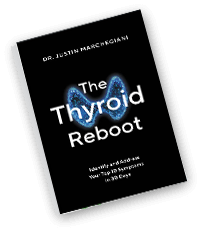
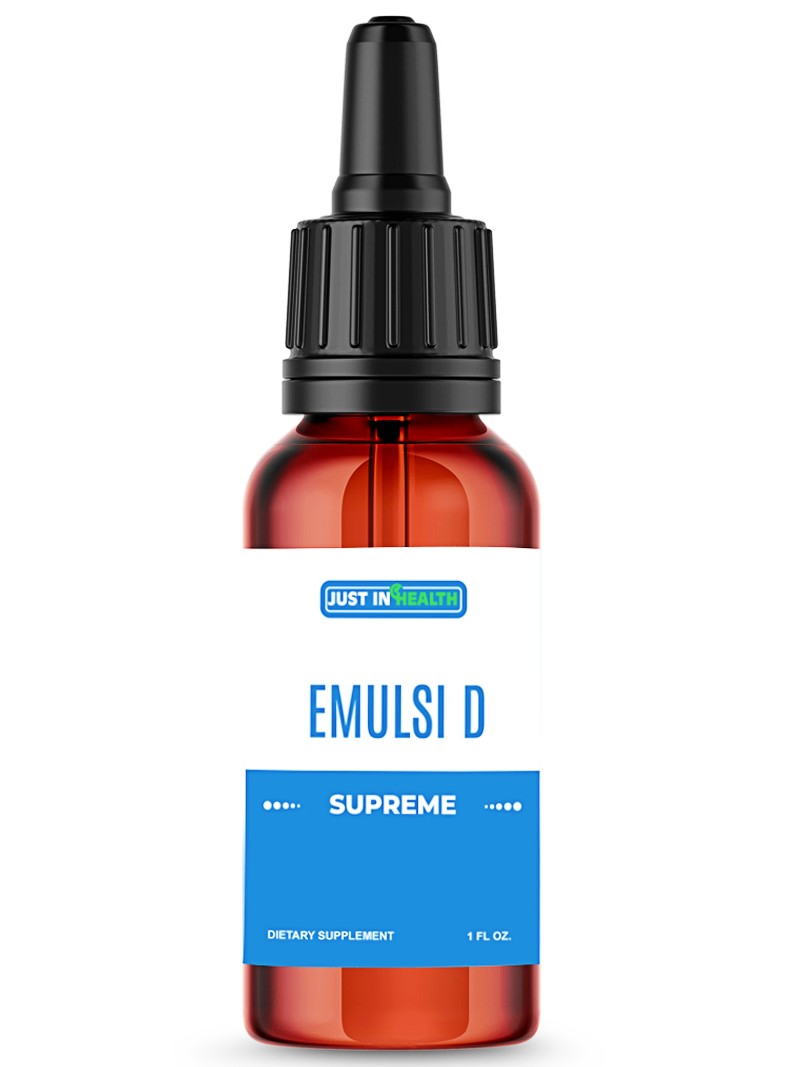
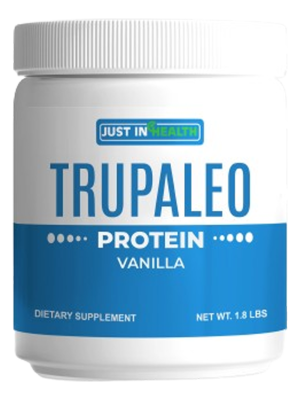
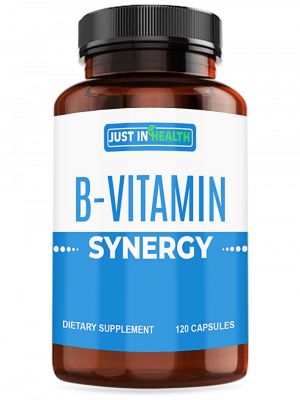
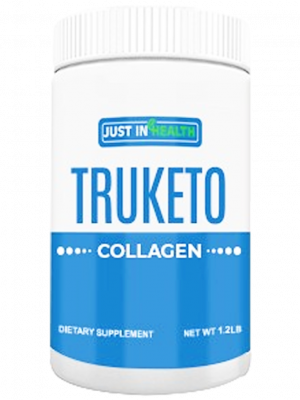
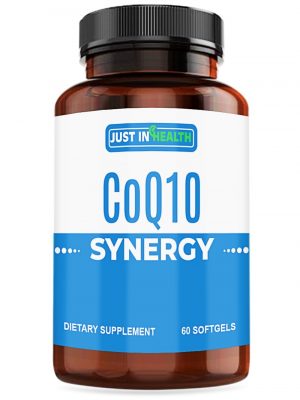
Reviews
There are no reviews yet.